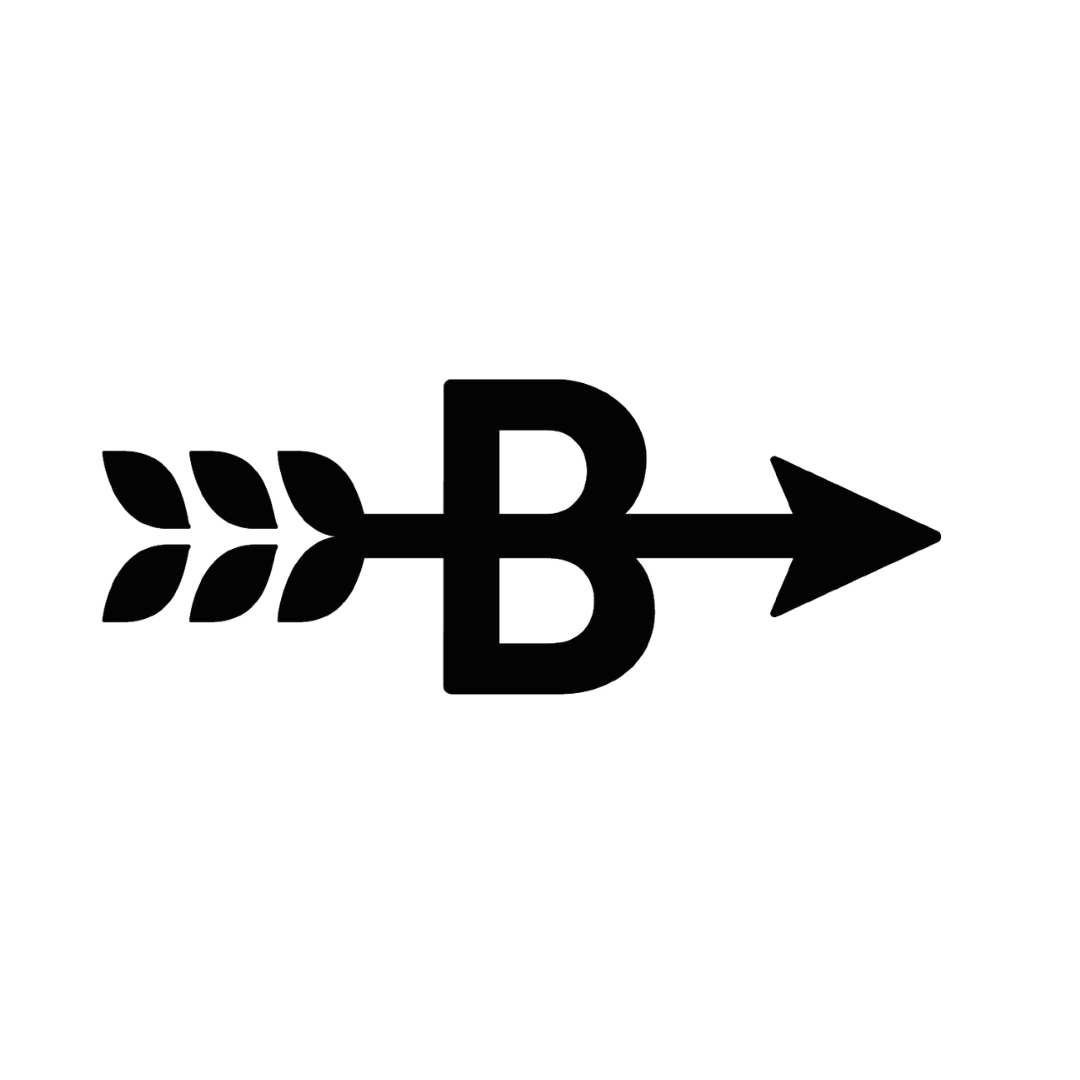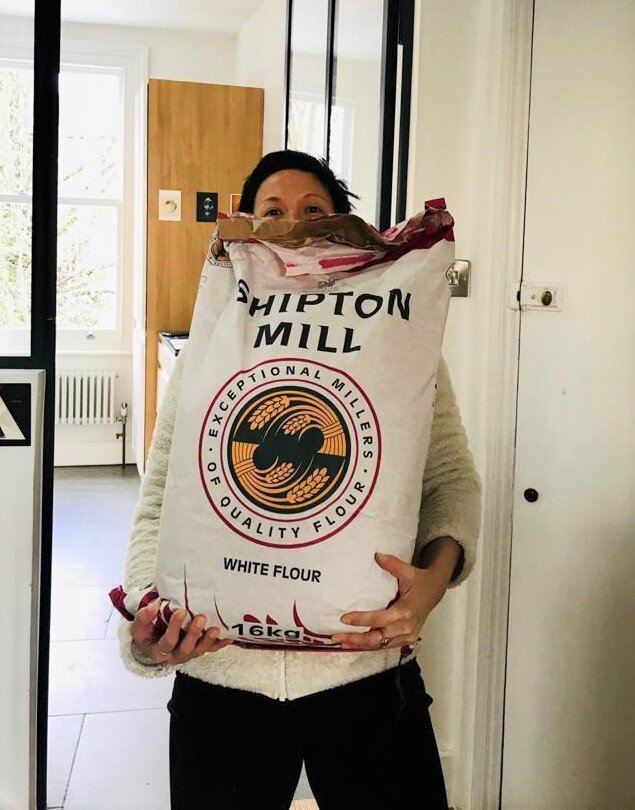Bread & Connection: Sourdough Baking with Ni
Want to try out Ni’s recipe? Get our Beginners Sourdough Kit for the equipment and ingredients to make an amazing sourdough loaf!
Ni with sourdough from Breadwinners.
Bread and Connection
My feverish journey into the wild underbelly of sourdough began like many others as a way to cope with being confined, with being deprived of touch and interaction. I found myself using my hands a lot more as instruments of contact, getting acquainted with non-human things around me to sense something palpable beyond myself, where I end and the world begins.
There’s something about the process of sourdough even before the actual baking that makes it feel like you are working with something tangible, unpredictable and therefore, alive. Through the manipulation of the dough, therein lies the possibility of discovering and understanding your own vitality and vulnerability, which can trigger a spectrum of emotion: from calm and satisfaction to utter confusion and panic.
Even your apprehension around the baked outcome feels like it mirrors a similar feeling about the larger erratic situation at hand but it’s that tactile encounter between body and bread which renders the overwhelming ambivalence a tad more manageable. To make a loaf that you and perhaps, your loved ones can sit down and enjoy together asks for a little anchoring of the monkey mind to stay present and roll with whatever caprices it brings. I call it – dough-ga.
“Hey,” you decry. “It’s just bread…” However, bread in all its seeming basic-ness is enduring and ubiquitous. It’s key to the formation of societies throughout history since the advent of agriculture over 10,000 years ago. It’s one of the oldest man-made foods, and there’s evidence of bread-making pre-dating the cultivation and domestication of wheat. But it’s this momentous shift of us humans from nomads to farmers that gave rise to settled civilisations, which has made bread more than mere sustenance, but an integral part of our culture no matter where we hail from.
Thus, bread universally underlies our conceptions of life and community. It has been the story that regales the way we live or the way we create kinship; and what we see to be essential or what we put our faith in. This is why there are several meaningful metaphors for this staple: “bread-winner” to refer to the economic provider of the family, “to break bread” as sharing a meal or connection with someone, “breadbasket” as a place of fertility and productivity, and “bread” or “dough” as money or a means to survive.
It makes sense that in an unprecedented time of distancing and isolation, making and baking bread reconnects us not only with our history and heritage, but also our primordial impulse for self-nourishment and sufficiency, and the yearning to be in touch with one another.
My Sourdough Boule Recipe
All pontification about the virtues of bread aside, this recipe is really a summation of my past year with sourdough, punctuated with moments of mistakes and failures, and then of repetitions, surprises and successes. It is by no means final, but an open book for your personal interpretation and experimentation, should you decide to venture to the next chapter of your voyage. It truly involves a combination of understanding the science and getting to emphatically know your ‘little guy’. One can’t exist without the other.
Ingredients
500g strong white bread flour
375g water
100g starter
11g salt
Rice flour
Equipment
Digital scale
Mixing bowl
Straight-sided container
Baking spatula
Kitchen towel as cover
Banneton
Dutch oven
Lame
Spray bottle (filled with water)
Baking paper
Cooling rack
A banneton (rising basket) and lame are two of the pieces of the equipment included in our Beginners Sourdough Kit!
Method
Feed Your Starter
So we start with the starter. When you’re ready to start baking, feed your starter. I normally use 100g, especially during colder climes.
Place the vessel holding your starter on a scale. Discard your starter until what remains in the container is about 50g, then add 50g flour, followed by 50g water at room temperature.
Mix well, cover loosely and then mark the level with a rubber band. Wait till it doubles or when it’s at its peak, then you’re good to go.
If you are curious to learn about how you can activate, feed, maintain and store your starter, click here.
Autolyse
It should be said that as you feed your starter, it’s worth just mixing your bread flour and water as well. Here, I don’t mix the entire 375g water with the flour, or include the salt and starter just yet. Instead, I mix just 345g water with the flour until it forms a shaggy dough.
This is the autolyse process where the gluten will develop from the proteins in your flour being broken down and can contribute to the elasticity of the gluten.
This way, you won’t have to manipulate the dough too much later on and fermentation can slow down for a fuller development of flavour. It takes about 4 hours for my leaven to reach its peak and this is sufficient time for the autolyse process should you mix your flour and water at the same time you feed your starter.
For the remaining 30g of water that has not yet been mixed, I set it aside to dissolve the salt. Turning it into a saline solution makes it easier to be mixed in later on.
Mix Remaining Bread Ingredients
Add Starter
After autolysis and when my starter has reached its peak, I add 100g of it to the top of my dough. I then spread it all over its surface, using my finger tips to make depressions in so that the starter can fully “infiltrate” the dough.
To fully incorporate it, I adopt the following mixing method known as the Rubaud method for a few minutes until the dough becomes smooth and supple. It’s almost like a gentle whisking of eggs but in place of a fork, you’re doing it with your hand. You are basically introducing air into the dough while creating extensibility. When I finished, I leave the dough to rest covered for 25-30min.
Bulk Fermentation
Add Saline Solution
With the addition of the salt water, you will notice that as you mix it in, it may feel like the dough begins to fall apart. Do not panic. Keep mixing it in and over time as it gets fully absorbed, you will start to feel the dough gradually cohere. I repeat the Rubaud method for further incorporation, then I let it rest again covered for another 25-30min.
Start keeping track of the time from here on out. This is when your bulk fermentation process begins. Take note that the salt doesn’t jumpstart the fermentation but in fact, slows it and the enzymatic process down.
What it does (apart from adding flavour to your dough) is that it actually begins to tighten the gluten structure, helping your bread hold onto the carbon dioxide gas produced from the fermentation process.
Stretch and Fold
At this stage, I usually transfer my dough from its mixing bowl into a straight-sided container, so I can accurately measure the rise in volume to minimise the risk of over-fermentation.
4 rounds of 4 ‘stretch and folds’ are performed, with a 30 min rest in between each round.
The process should go something like this:
1st stretch + fold (perform at each edge until you have turned your vessel on all four sides like a square) then rest 30min
2nd stretch + fold (same as above) then rest 30min
3rd stretch + fold (same as above) then rest 30min
4th stretch + fold (same as above) then rest 30min
The stretch and folds help to regulate the temperature of your dough while facilitating further development of the gluten network. But there is such a thing as doing it too much so don’t get tempted to overwork the dough.
After I have performed 4 rounds of stretch and folds, it would entail that about 2.5 hours of bulk fermentation have passed (which includes the resting period after the addition of salt).
Depending on the environmental conditions of your kitchen, the rest of the rise can take anywhere from 4 to 12 hours. I usually stop bulk fermentation not when the level doubles but at about 30-40% more from where it began, to accommodate the additional timing it takes to pre-shape, rest and cold proof the dough as it continues to ferment so as to avoid over-fermentation which compromises the gluten structure you have worked so hard to develop hitherto.
Pre-shape
During the pre-shape, I generally use rice flour instead of wheat flour for the flouring as it doesn’t get absorbed into the dough. How I do the pre-shape is to wrap my dough like an envelope, then flip it over seam-side down before using my hands and scrape to tuck it in towards me. This creates surface tension to the dough so it holds its shape. I leave it to rest for 20-30min before repeating the process again. After the second pre-shape, I place it into the banneton (rising basket) seam-side up, cover it and put it into the refrigerator for the cold proof.
Cold Proof
A cold proof can range from 12 to 24 hours. Personally, I prefer leaving it in the fridge for 24 hours. The cold proof process is akin to “dry-aging” the dough, giving it a more robust flavour and greater possibility for an open crumb.
Bake
Pre-heat your oven at 250C with your dutch oven for 45min to an hour so it gets really hot.
When ready, take the dough out of the fridge, invert the banneton to release it onto a sheet of baking paper. With your lame, score an “x” on its surface. Then use your baking parchment to transfer the dough into your dutch oven. I usually spray some water here to create steam.
Close the lid and put in the oven for 25min at 230C, then another 25min at 205C without the lid. Finally, another 10min without the dutch oven or parchment paper on your oven shelf so that the crust of your boule caramelises fully. I love it dark brown.
Rest
Remove and let your boule rest for an hour on a wire rack before slicing it and slathering that slice with a whole load of salted butter or a favourite condiment of your choice.
About Ni Hsieh
Ni is a staunch Breadwinners supporter. She was one of the first customers to order their bread online at the beginning of the first lockdown. When not making sourdough, she facilitates yoga and body psychotherapy independently.
She offers an intuitive and enquiring style of yoga inspired by the Scaravelli approach that is an exercise in body-awareness and informs us of our experience of being ourselves. She also offers body psychotherapy that works with the emotional responses of the body.
To learn more about her work, check out her website and Instagram.



